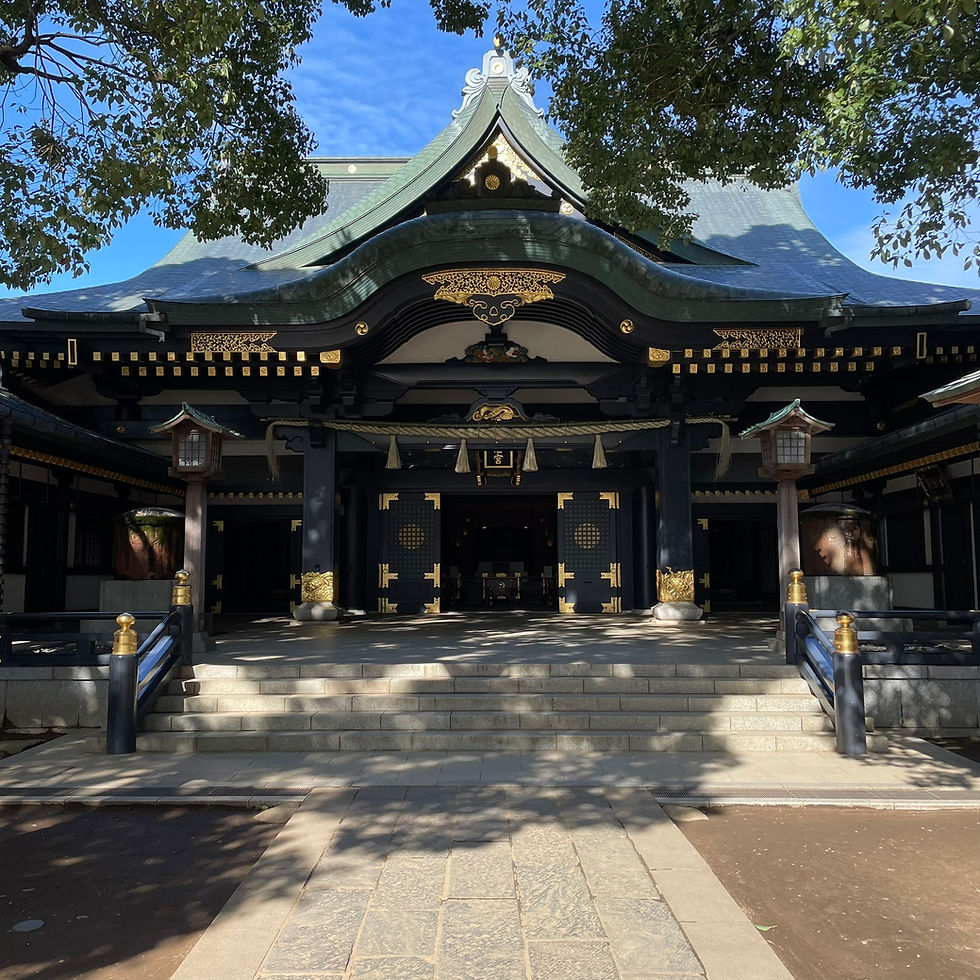Experience Traditional Japanese Architectural Techniques (6): "Onigawara"
- Shinya Yamada
- Apr 27, 2024
- 2 min read
Updated: Sep 24, 2024

At the Kigumi Museum, you can experience more than just timber framing—many traditional Japanese architectural techniques are on display here. Most of these have been registered as UNESCO Intangible Cultural Heritage under the category ‘Traditional skills, techniques, and knowledge for the conservation and transmission of wooden architecture in Japan.’ Let's explore these traditional techniques as they are exhibited at the Kigumi Museum.

What is Onigawara?
Onigawara are a key decorative element in Japanese architecture, known primarily for their placement at the ends of roof ridges. Typically made of tile, they are adorned with faces of ogres or mythical creatures and are situated at the top of the building (the ridge). Historically, onigawara were used as a form of protection, warding off evil spirits and external threats.
The use of onigawara dates back to the Asuka period (592-710), with their shapes and designs evolving over time. Initially simple in form, they gradually became more artistic and complex. Particularly from the Muromachi (1336-1573) to the Edo period (1603-1868), onigawara became a symbolic aspect of Japanese architecture, with significant advancements in their crafting techniques.

Onigawara not only serves a decorative role but also has functional aspects. Positioned at the ridge ends, they stabilize the roof structure and prevent rainwater from entering the building. Thus, onigawara are not merely aesthetic enhancements but also play a crucial role in protecting the building from the elements.
Today, onigawara can still be seen on many traditional Japanese buildings, where tradition is maintained even as new designs are explored. Some modern onigawara replace traditional ogre faces with motifs of landscapes, flowers, and birds, emphasizing their role in the artistic expression of Japan's cultural heritage.
Onigawara thus occupies a significant place not only in Japanese architectural techniques but also in culture and art, underscoring their invaluable worth. Through onigawara, we can appreciate the depth of Japanese tradition and culture.
What is an Onishi?
An Onishi is a craftsman who specializes in making onigawara. These artisans bring each tile to life through their high-level skills and meticulous craftsmanship. As of 2021, there are approximately 70 to 80 onishi in Japan, about 50 of whom are based in the Mikawa region of the Mikawa tiles production area. This region is renowned for its high-quality tiles and the preservation of traditional techniques.
Onishi do more than just shape tiles; they create works that reflect their regions' culture and history, shaping Japan's traditional aesthetic. Each onigawara symbolizes the history and stories of the houses they adorn, making each piece uniquely crafted to order.

Let’s Experience Traditional Japanese Architectural Techniques at the Kigumi Museum
In this way, onigawara are essential elements of traditional Japanese architecture, with the skills and dedication of onishi ensuring that many historical buildings continue to retain their beauty. Why not visit the Kigumi Museum to see and touch these architectural art pieces? Our English-speaking guides are ready to assist international visitors, ensuring your trip to Japan will be an unforgettable experience. Let’s experience traditional Japanese architectural techniques at the Kigumi Museum.




Comments